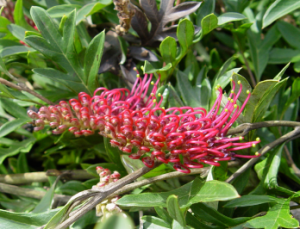Fern SG newsletter, no.154, May 2023
The FSG will be congregating in NSW this November, with the itinerary to include the Blue Mountains and the South Coast. In the meantime, both the Sydney Region and the SEQ Region have an active program of excursions and study topic activities in their areas. The newsletter reports on a fern excursion along the Morelia Track in the Manorina, D’Aguilar National Park. With 3 years of La Niña, the area is verdant and lush. A Zoom meeting previewing likely finds, encouraged many new fern fiends to join a walk along Tamborine National Park’s MacDonald Rainforest Circuit, to try out their new identification skills. Many tips on growing ferns at home were obtained by a visit to Beth and Graham McDonald’s residence to view potted specimens and a 40-year old planted rainforest. The fern family Thelipteridaceae has been revised with a number of new generic names.
Study group contact is ANPSAferns@bigpond.com
Acacia SG newsletter, no. 154, April 2023

A Ph.D thesis is available which documents the nutritional value of Australian acacia seeds. They are rich sources of protein, but require processing. Practical considerations present obstacles to commercial use, but the potential is significant. Acacia acuminata, the raspberry jam wattle, is a WA species which is a bush tucker resource. An article by Nicky Zanen describes the species and reports on her success growing it. A. auriculiformis is a northern Australian wattle which has spread outside its natural distribution and is a serious weed in some overseas regions. Biological control agents are under investigation. The NSW species A. baileyana is considered a weed in some areas of Australia. Growers however tend to regard the prostrate form as not “weedy” because it sets few seeds. Bill Aitchison made visits to Maranoa Gardens (Vic.) to log which wattles are in flower in February/early March. A. jibberdingensis (see photo) is a March flowerer.
Study group contact is acaciastudygroup@gmail.com
Grevillea SG newsletter no. 125, June 2023

The newsletter includes information of interest to NSW members concerning occurrence and variation in Grevillea juniperina and G. rosmarinifolia. A further article documents the grevillea species found in Sutherland Shire, totalling 9 species, 2 of them endemic. Some occur in populations which are morphologically distinct from typical forms, and these may be recognised as separate species eventually.
The well-known grevillea G. gaudichaudii was first collected in 1819 on a trip to Bathurst, and was named after its discoverer Charles Gaudichaud-Beaupr. It was later concluded to be a natural hybrid between G. laurifolia and G. acanthifolia. Other forms were collected and propagated, but the botanical form is most often encountered in horticulture.
Peter Olde offers tips for grevillea pruning and maintenance. He recommends hard pruning as a general rule, to shape and invigorate plants. Peter’s tips cover timing, shaping, weed control, fertilizing and mulching.
Study Group contact is bruce.moffatt@tpg.com.au
